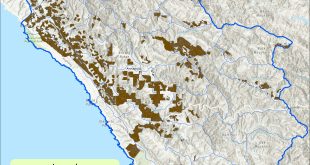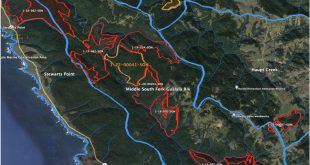Are human logging actions affecting the adaptation and survival of this ancient species?
by Robin Applegarth, Nov. 7, 2021
Reprinted by permission
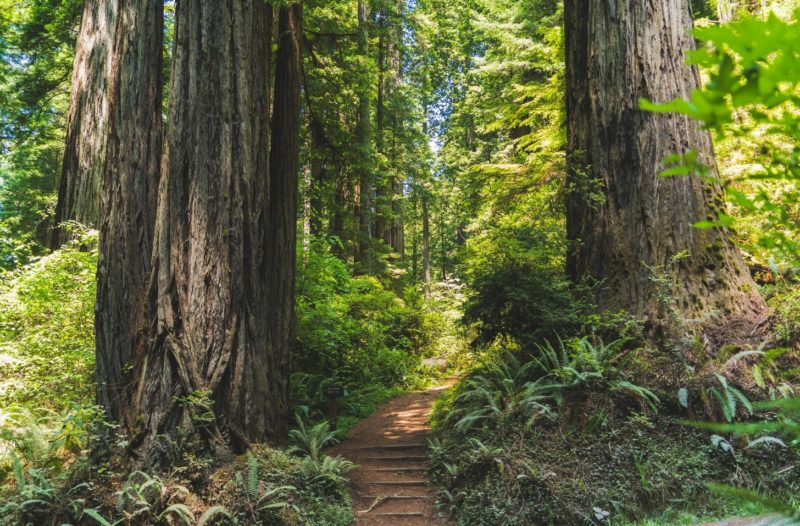
OUR CAR BUMPED DOWN A DIRT ROAD, descending into a canyon of tall redwood trees. The sunlight lessened as deep forest and the canyon walls rose up around us. Thousands of coastal redwoods hemmed the narrow road and my eyes sought out shafts of light to see better into the shadowy woods.
My husband and I were visiting a forested property in Point Arena, in the heart of coastal Northern California, where we were headed for a walk. We passed a hillside with hundreds of verdant-green ferns as we dropped down to the level of the creek. It felt like we were moving back in time into a primeval forest. I almost expected to turn a corner of the road and see a long-extinct animal emerge.
Coastal redwoods (Sequoia sempervirens) grow in a narrow band of forest from around Santa Cruz CA. to southern Oregon. Redwoods evoke feelings of permanence and a continuity of time stretching back millennia. Sempervirens means “evergreen” or “everlasting” in Latin.
“The earliest redwoods showed up on Earth shortly after the dinosaurs—before flowers, birds, spiders…and of course humans. Redwoods have been around for about 240 million years, and in California for at least 20 million years, compared to about 200,000 years for “modern” humans.”
Sempervirens.org https://sempervirens.org/learn/redwood-facts/
The contrast between ancient and modern redwood forests is stark though. Redwoods have a normal life span of up to 2,200+ years old, but they rarely get to reach that age on today’s Earth.
These redwoods I was traveling through had seen their lives truncated, cut down several times in the last 150 years of European occupancy, leaving a younger forest of trees mostly under 80 years old— just toddlers in the lifespan of a redwood.
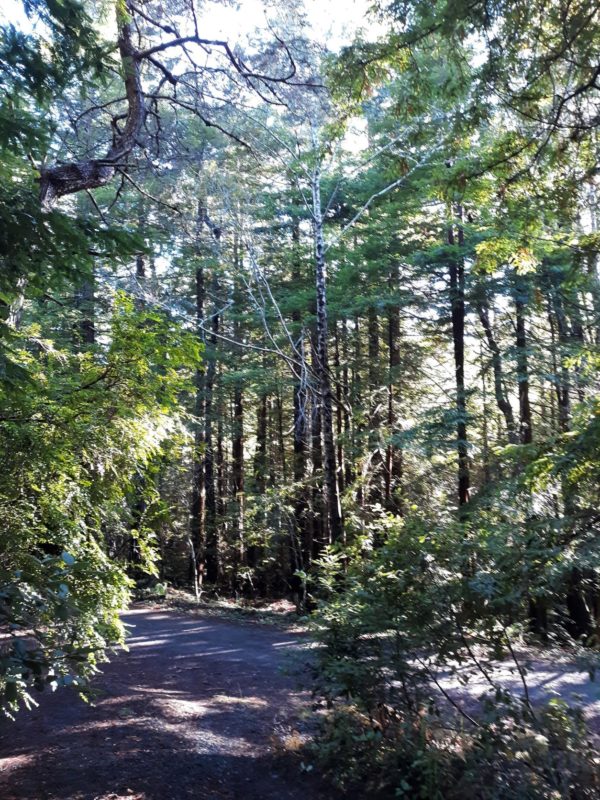
To show what could have been had the forest been allowed to grow, fat redwood tree trunks were dotted throughout the landscape from logging decades ago.
This young forest was a reminder of our love for wood products and especially redwood, which is more water-resistant and insect-impervious than many other trees. A tannin in its thick bark increases the tree’s resistance to disease and pests, increasing longevity.
Coastal redwoods from this region were cut down in large numbers to rebuild San Francisco after the earthquake and fire of 1906 destroyed most of the city. Redwoods that were centuries or thousands of years old were cut, milled, and shipped off to become homes, stores, and shipyards.
My family even has a history with redwoods and California development. My husband’s grandfather, George A. Applegarth, helped rebuild the city after 1906, as he was a San Francisco architect then. He designed buildings using both stone (Legion of Honor museum) as well as redwood, the lumber of that period. His home overlooking the bay, built in 1914, had a closet where you could peek in to see the actual 2-inch x 4-inch redwood studs.
Redwoods helped create the iconic city of San Francisco. What we didn’t realize when we cut them down 100+ years ago was that the forests of massive-sized trees would take many centuries to regrow, their replacements only a shadow of their size. Save The Redwoods estimates that less than 5% of old-growth forests remain— possibly as little as 2%. Here is a list of some of the biggest coastal redwood trees, which can grow to a neck-bending 379 feet tall. Below is a photo of the trunk of a coastal redwood about 1500 years old.
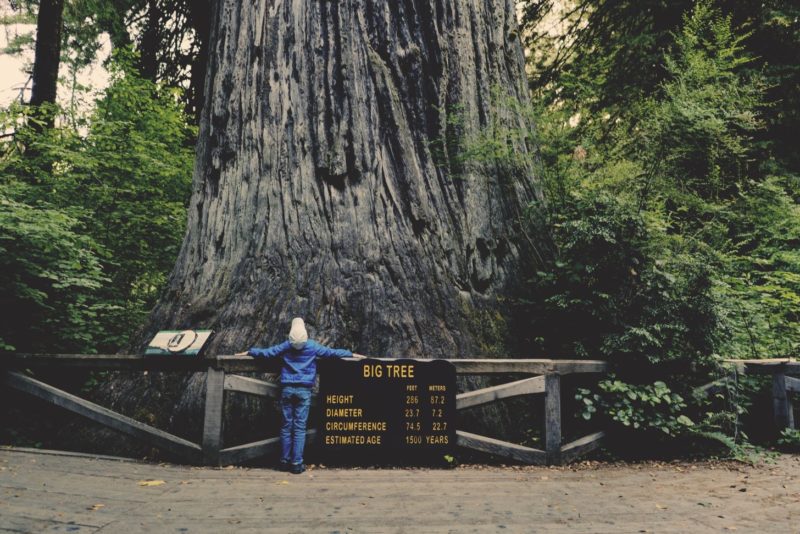
Honoring a tree species that lives for millennia
We stopped our car and got out for a walk. Mother Nature seemed to be using a pallet of fifty shades of green, from dark, grayed-greens where the sunlight didn’t penetrate to the bright yellow-greens of new redwood growth. A variety of mushrooms sprouted up from the forest duff and there was a fresh smell of earth, humus, and moisture. The peaceful silence was punctuated by occasional bird calls and the faint trickle of the running creek.
As we explored this young forest, I realized that the roots of the old larger, logged trees were still in the ground, maybe still a part of the living mycelium colony that connects all the plant and fungi life that have their feet in the earth.
I reflected on our bond to a tree species that lives for thousands of years. All species alive adjust to changing conditions over time, as Darwin and scientists after him discovered. This “learned experience” can then be used for survival and passing on to offspring, just as older humans accumulate experience and knowledge over time.
When trees have a life span of millennia, it seems that they would embody more of that adaptive, survival experience. When we cut these forests down as soon as they grow “board feet of timber,” how does that affect the trees’ ability to pass on what should have been many centuries of experience and adaptation? Is there a type of primordial redwood “culture” that we haven’t identified yet?
We need to address the ethics of cutting this ancient tree species to the point where there are very few older specimens left. I’d like to see a world where long-lived redwood matriarchs are frequent sights along the “redwood coast,” bringing back the awe-inspiring tall forests of the 1800s.
My husband and I eventually stopped walking and sat down for a rest. I leaned my back against a young redwood tree. It felt solid, serene, enduring. I had a deep sense of peace and gratitude for the abiding presence of the tree and forest. It reaffirmed my hope that our young human species can perhaps learn something from the ancient species around us.
To read more articles by local author Robin Applegarth, visit Mother E on Substack, a free newsletter published every other Sunday. Applegarth tells stories about our kinship and connections with other species in a climate-changing world.
 Friends of Gualala River Protecting the Gualala River watershed and the species living within it
Friends of Gualala River Protecting the Gualala River watershed and the species living within it
